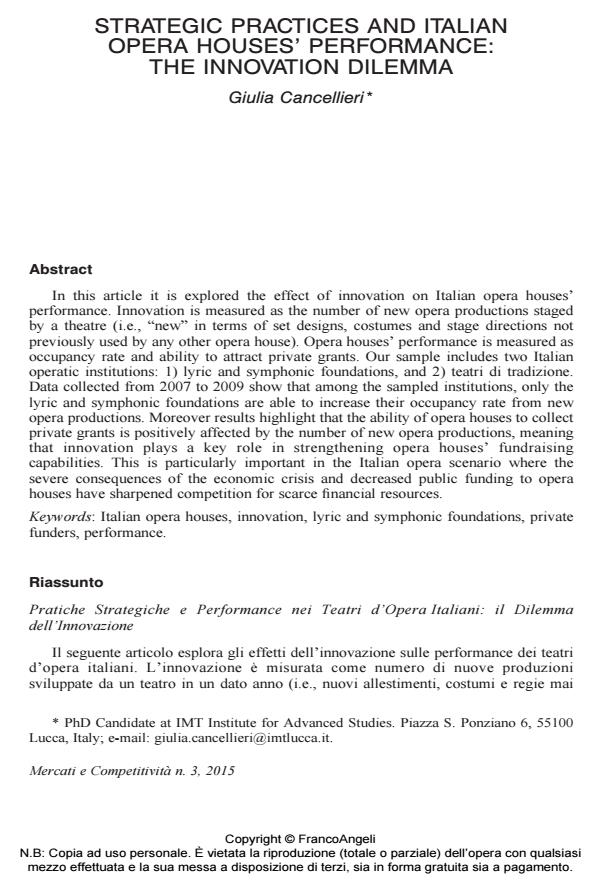Strategic practices and italian opera houses’ performance: the innovation dilemma
Titolo Rivista MERCATI E COMPETITIVITÀ
Autori/Curatori Giulia Cancellieri
Anno di pubblicazione 2015 Fascicolo 2015/3
Lingua Italiano Numero pagine 21 P. 39-59 Dimensione file 548 KB
DOI 10.3280/MC2015-003003
Il DOI è il codice a barre della proprietà intellettuale: per saperne di più
clicca qui
Qui sotto puoi vedere in anteprima la prima pagina di questo articolo.
Se questo articolo ti interessa, lo puoi acquistare (e scaricare in formato pdf) seguendo le facili indicazioni per acquistare il download credit. Acquista Download Credits per scaricare questo Articolo in formato PDF

FrancoAngeli è membro della Publishers International Linking Association, Inc (PILA)associazione indipendente e non profit per facilitare (attraverso i servizi tecnologici implementati da CrossRef.org) l’accesso degli studiosi ai contenuti digitali nelle pubblicazioni professionali e scientifiche
In this article it is explored the effect of innovation on Italian opera houses’ performance. Innovation is measured as the number of new opera productions staged by a theatre (i.e., "new" in terms of set designs, costumes and stage directions not previously used by any other opera house). Opera houses’ performance is measured as occupancy rate and ability to attract private grants. Our sample includes two Italian operatic institutions: 1) lyric and symphonic foundations, and 2) teatri di tradizione. Data collected from 2007 to 2009 show that among the sampled institutions, only the lyric and symphonic foundations are able to increase their occupancy rate from new opera productions. Moreover results highlight that the ability of opera houses to collect private grants is positively affected by the number of new opera productions, meaning that innovation plays a key role in strengthening opera houses’ fundraising capabilities. This is particularly important in the Italian opera scenario where the severe consequences of the economic crisis and decreased public funding to opera houses have sharpened competition for scarce financial resources.
Parole chiave:Teatri d’opera Italiani, innovazione, fondazioni lirico-sinfoniche, finanziamento privato, performance
Giulia Cancellieri, Strategic practices and italian opera houses’ performance: the innovation dilemma in "MERCATI E COMPETITIVITÀ" 3/2015, pp 39-59, DOI: 10.3280/MC2015-003003